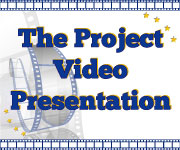basic information
THE INITIATIVE PROMOTER’S PERSPECTIVE
The project’s aim was to establish European contacts and partnership between the pupils and the stuff from 8 participating countries – Germany, Latvia, France, Turkey, Romania, Poland, Finland and Greece. This was to be achieved by contacts and exchanges between schools around the common theme of sports.
The project’s aim was to establish European contacts and partnership between the pupils and the staff from 8 participating countries – Germany, Latvia, France, Turkey, Romania, Poland, Finland and Greece. This was to be achieved by contacts and exchanges between schools around the common theme of sports.
•DESCRIPTION OF THE CONTEXT AND OF THE NEEDS THE INITIATIVE RESPONDS TO:
The primary school follows a comprehensive European-oriented educational concept that includes early language learning. This COMENIUS project brought together nine primary schools from eight different countries. The target of the project was to enhance cultural, linguistic and social communication in combination with various expressions of movement. The various aspects that were explored by the project community focused on: movement in terms of locomotion, artistic and playful expression of movement (dance, games), but also movement in terms of migration on a mental level. Each class of the school has a partner class in one of the partner countries. The children learn specifically national modes of movement/locomotion, gain foreign language skills “in motion” as well as intercultural competence. They discover the diversity of languages in Europe and make a European identity their own. In the project the partner schools first documented games that include movement and are typical for their country with descriptions, photos and films which then the partner schools tried out.
Here are some of the results of the project:
* Common events to start the project
* Presentation of sports and games which are typical for each country
* Finding out differences and similarities between sports and games
* Learning of languages with means of sports and games
* Developing a kind of Olympic Games for children
* developing glossaries in 8 languages on numbers, games and sports.
The project concentraetd on enjoyable, practical experiences with physical activities to make European communication real to the children.
* Focusing on some theroretical aspects concerning the theme "Active Europe" (active into the future, open to migration)
To give additional publicity to the project and a reward to the staff and children involved.
The project is still in progress
Mainly for communication and prestige purposes
?
THE NELLIP NETWORK’S PERSPECTIVE
The project was a real practical approach to the European aim of intercultural exchange and the promotion of linguistic diversity.
The year's priority put the emphasis on active participation in intercultural and linguistic experiences and this project corresponds fully to this.
THE NATIONAL AGENCY’S PERSPECTIVE
The children learned games and sports form other countries and at the same time learned about each others' school system. The project was an exampe of real European communicatio n at the level of the children.
Comments on this Case Studies
Date: 2014.07.15
Posted by Richard Rossner (UK)
Message: This project sounds brilliant - linking pupils in schools around Europe to explore areas such as locomotion and migration using their common knowledge of foreign languages as a vehicle adds considerable value to the primary curriculum and provides all sorts of awareness raising and motivation potential.
